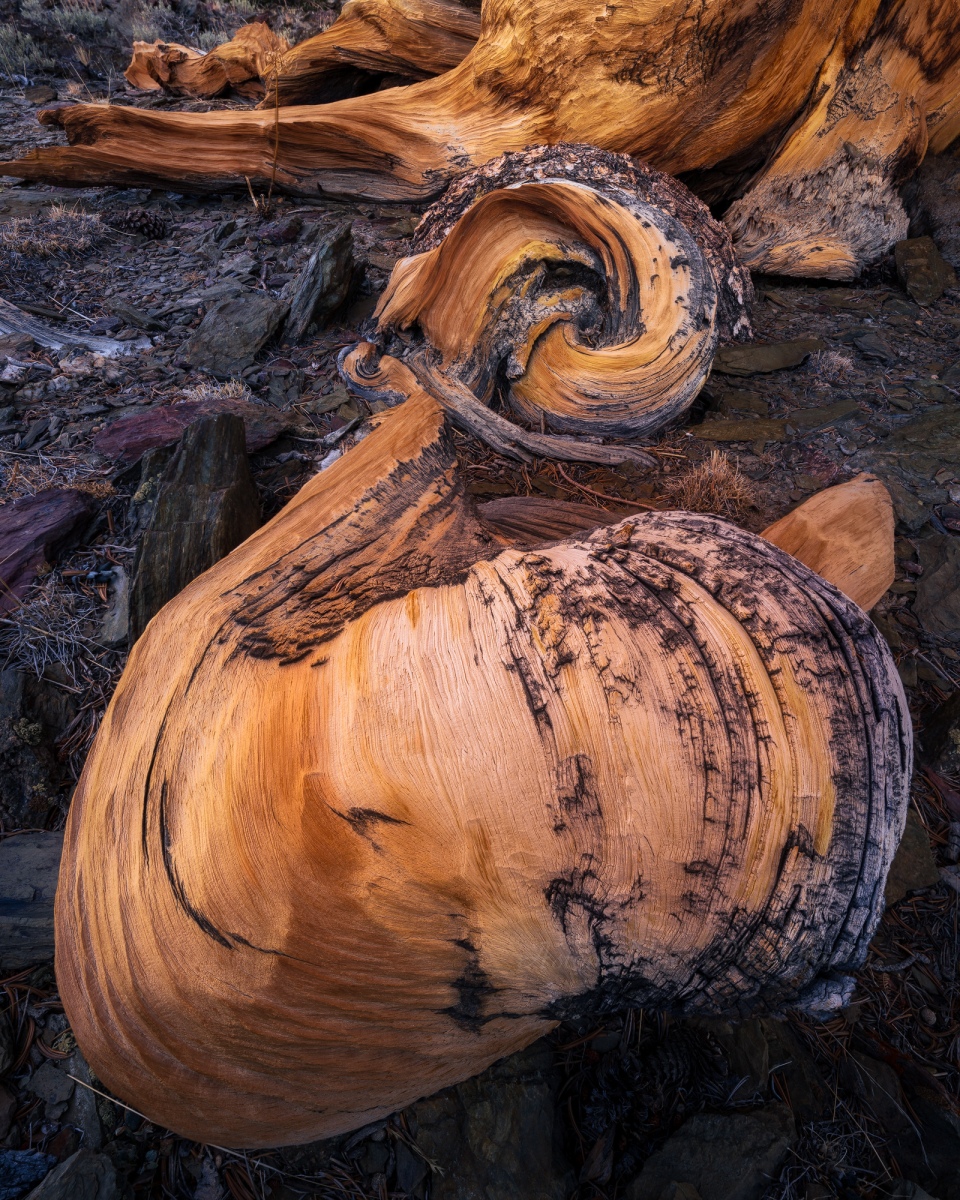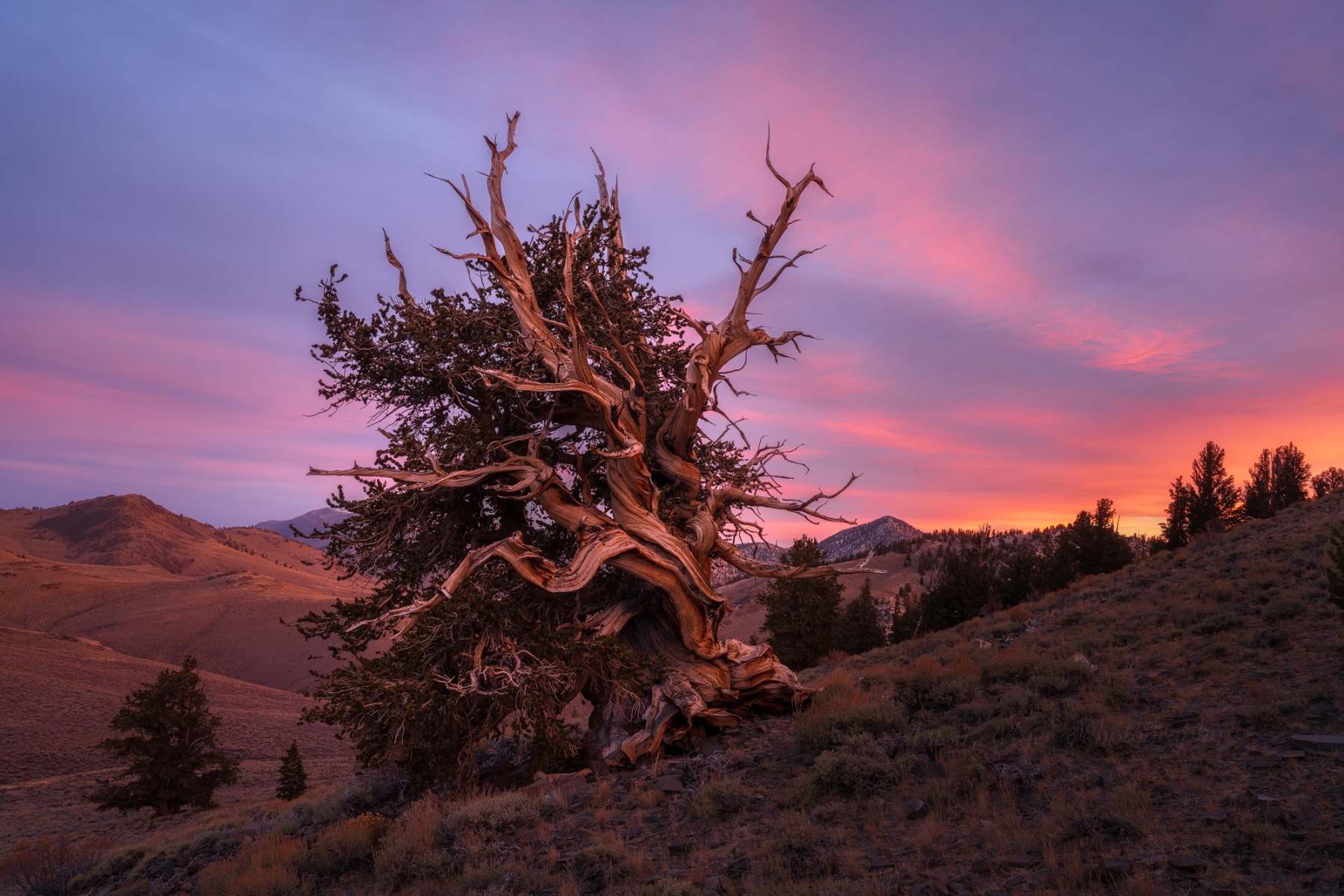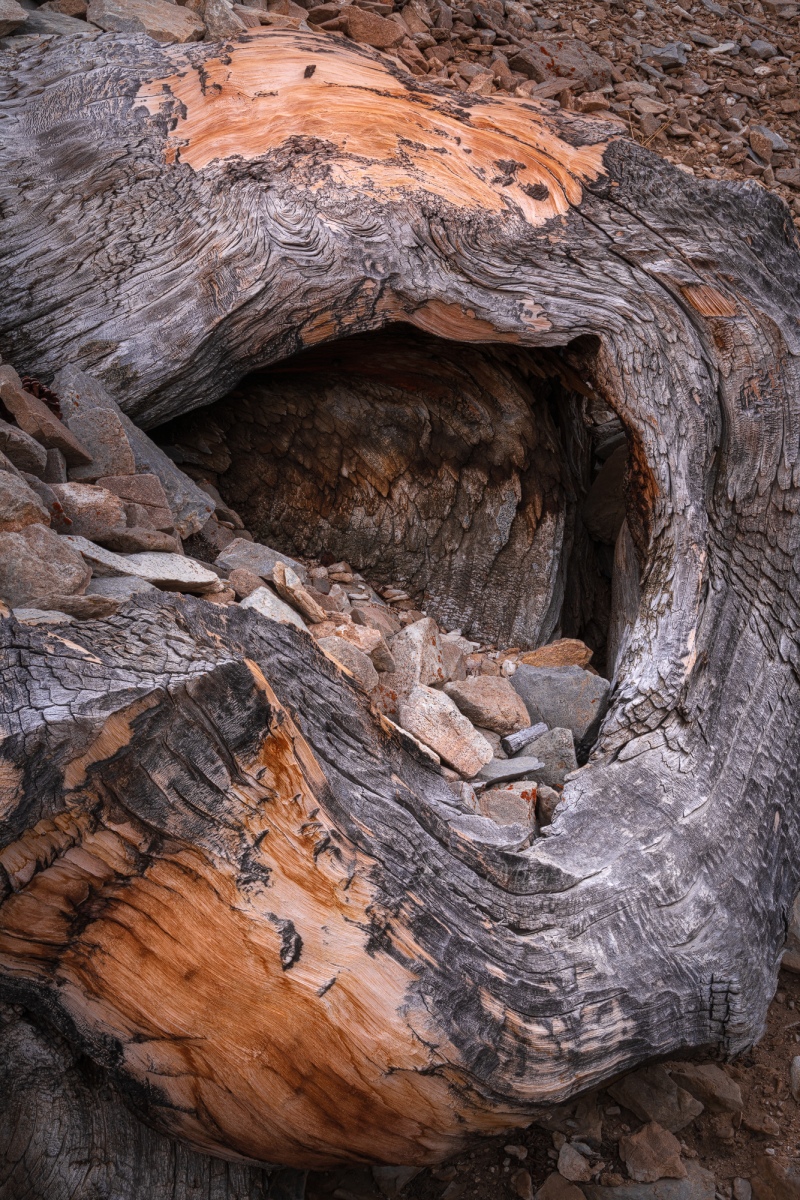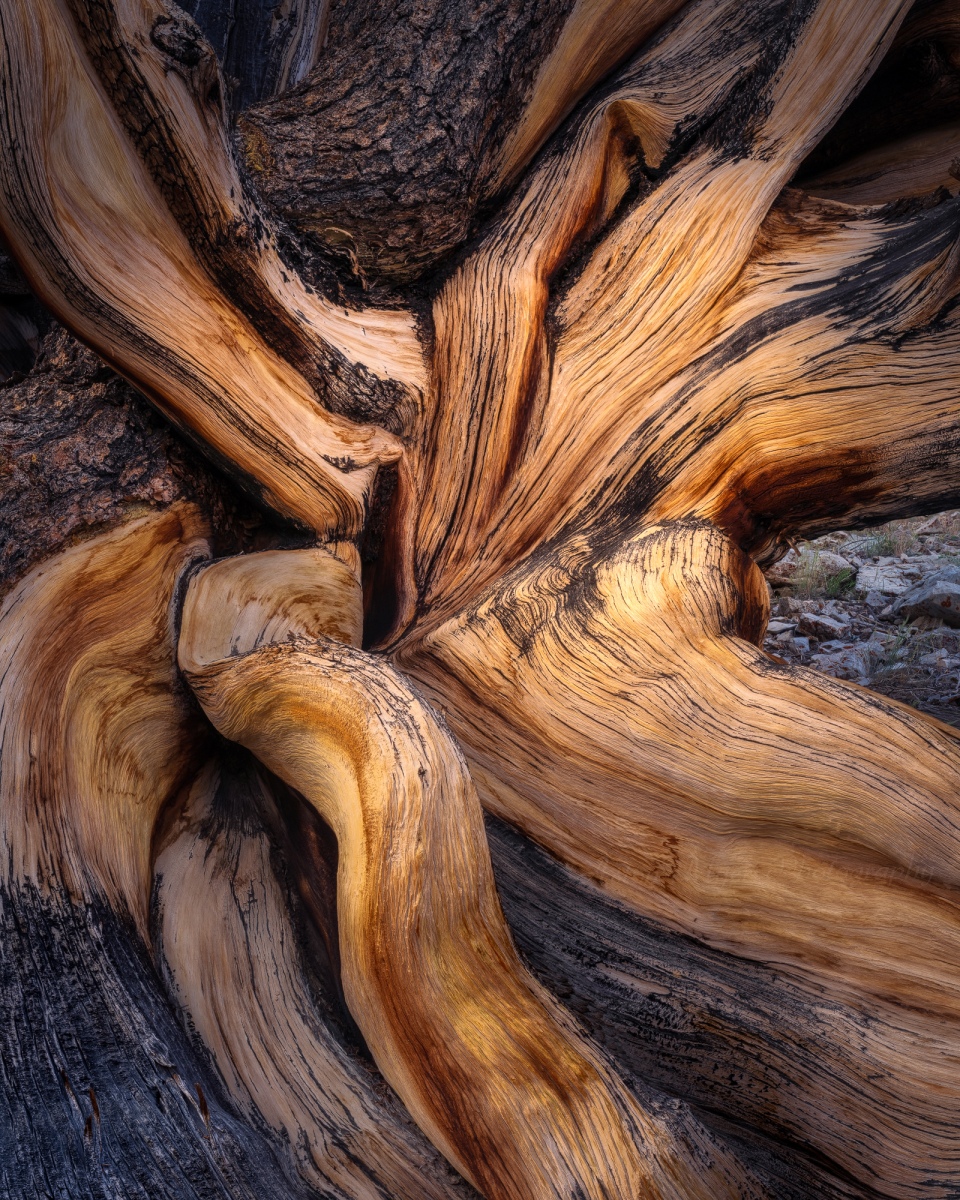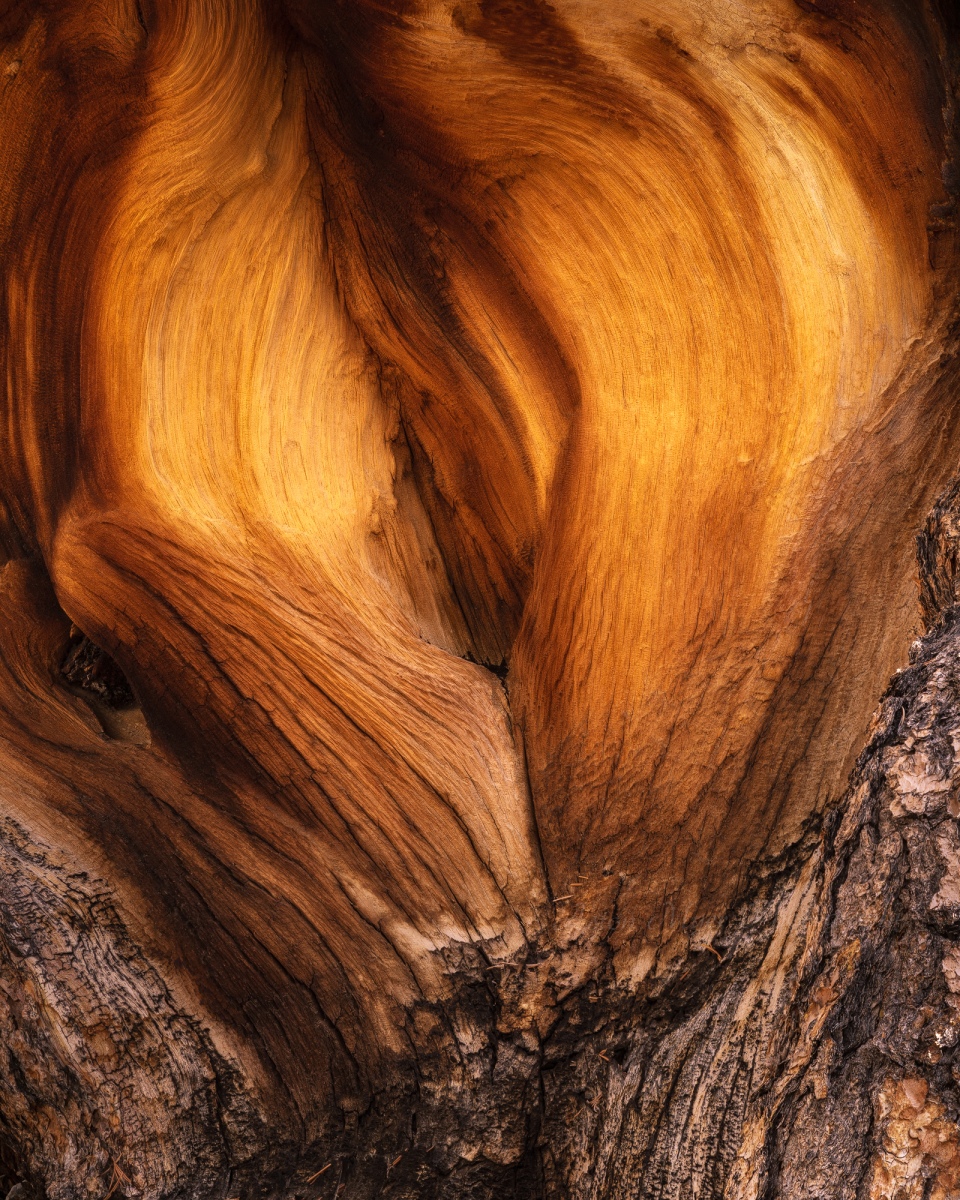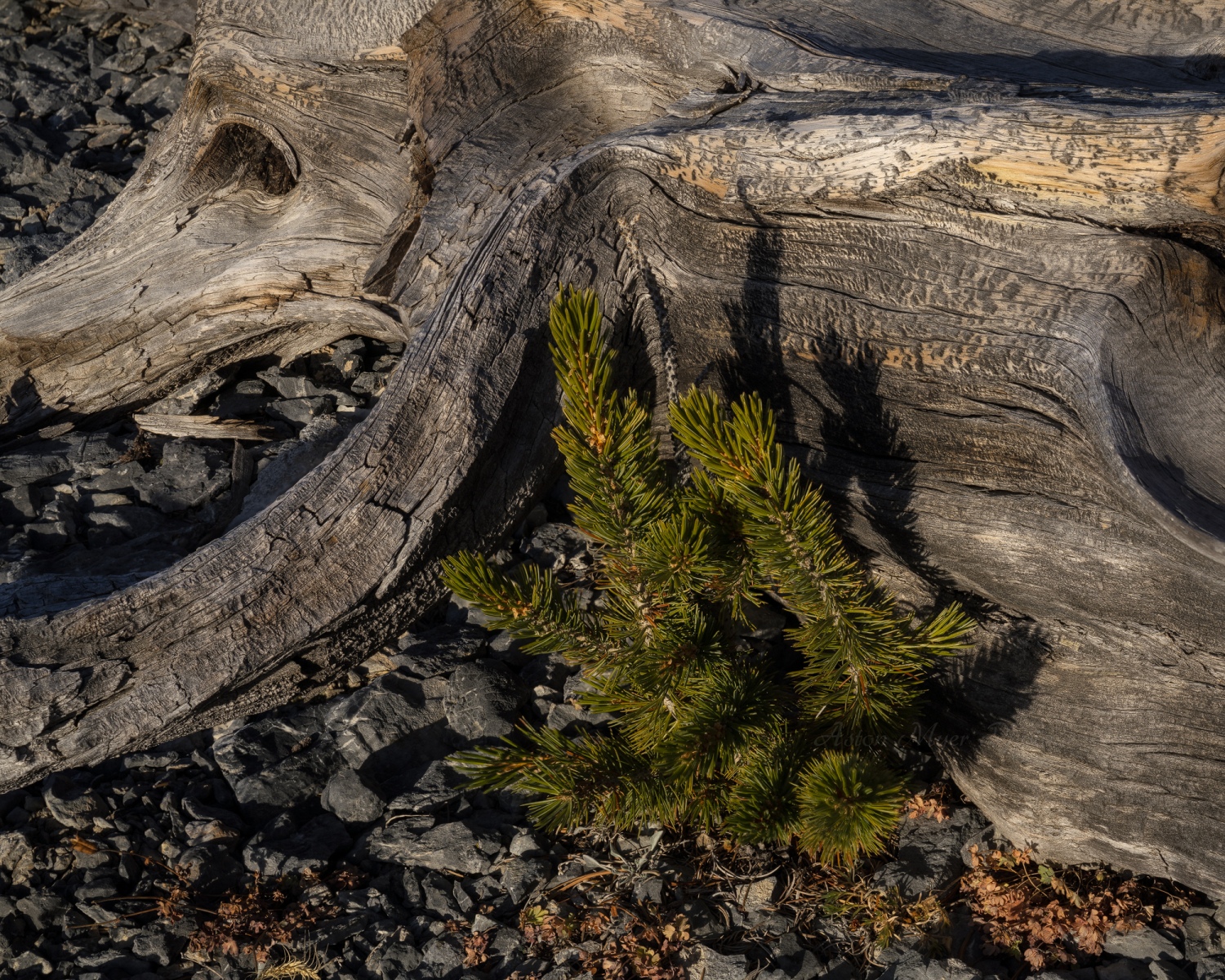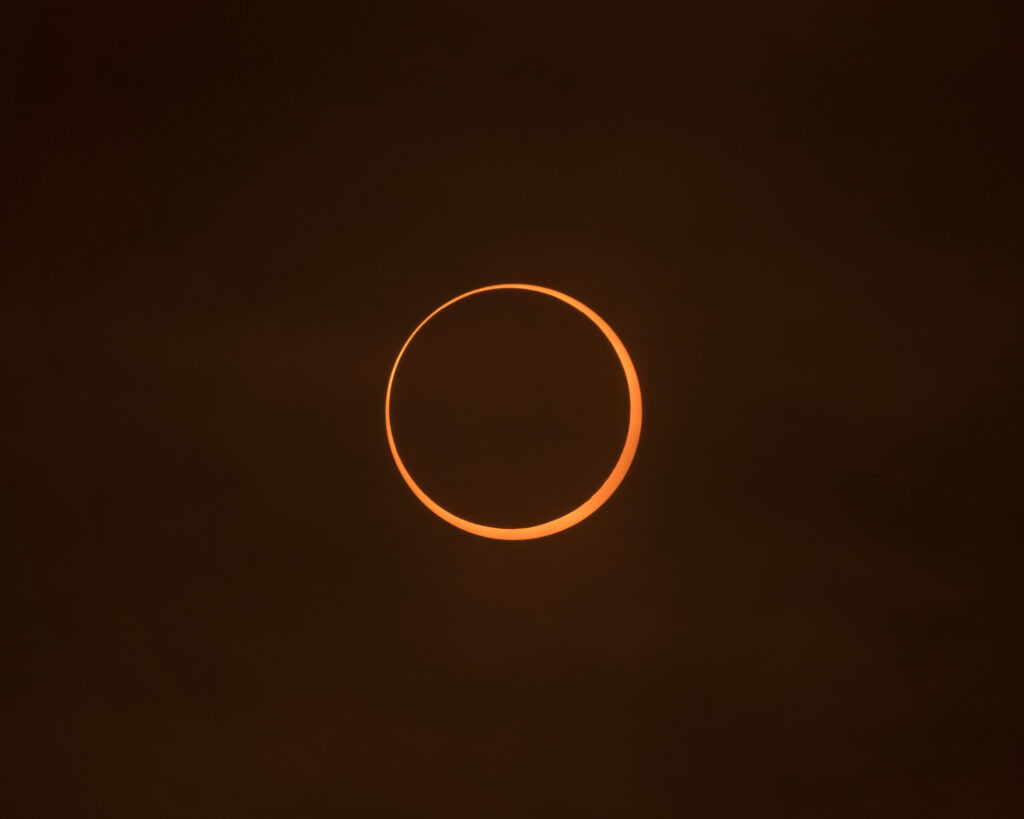
Note: scroll to the bottom to see my image of the 2023 annular eclipse if you can’t wait!
The annular eclipse on October 14, 2023 felt like a birthday present since we drove out to see it on my actual birthday. The center line was about a 6-hour drive away, which wasn’t too bad, but the most important consideration when planning was that totality (the annulus or ring of fire) would touch groves of the Great Basin Bristlecone Pines (Pinus longaeva) in Great Basin National Park. The cloud forecast along the path of annularity looked grim for most places in the United States except over eastern Nevada and parts of Utah. I always appreciate it when clouds cooperate with my photographic desires.
My love for the bristlecones runs deep, and when people come to my art festival booth, I usually volunteer that any place with bristlecones is my favorite place to be. A bristlecone forest feels different than any other, and while I love forests in general, bristlecone forests are the pinnacle. Clearly, other people feel the same way – a sign upon entering one of the Great Basin groves describes the bristlecone’s “grotesque” beauty, and someone took the time to scratch out as much of the word grotesque as they could. Don’t mess with bristlecone lovers. If you’d like to read more about people interfering with bristlecones, read up on the Prometheus tree.
My plan was to travel to Great Basin National Park, which is really far from just about any population center (296 miles from Las Vegas, 387 miles from Reno, 234 miles from Salt Lake City, and 361 miles from us in Mammoth Lakes). I knew I wanted an isolated bristlecone with a strand of pearls sun/moon sequence showing the phases of the eclipse, but this required some scouting. The most well-visited grove of bristlecones in Great Basin sits at the base of Wheeler Peak, but it is dense with distracting elements. The grove was clearly offended that I didn’t plan on photographing the eclipse within it because I ended up knocking over my tripod with the camera attached and the trees seemed to laugh. Fortunately, it landed in a way that doesn’t seem to have damaged the optics of the lens or the camera.
Another grove sits on an exposed ridge of limestone where the trees grow sparsely, and it sounded like one of the groves very near home in California. The problem is I’d never been to Great Basin before, and the trail to this grove isn’t well-developed or easy. My plan was to scout the grove using the PhotoPills app, on Friday the 13th, and return for the eclipse the following morning. Why not just sleep there, you might ask? The grove is a touch above 11,000 feet in elevation and it’s the middle of October. The forecast called for 10°F overnight and there’s no water along the trail. I didn’t really want to carry 8 liters of water, camera equipment, and all my warmest gear. Perhaps I will at another time. I set out using my GPS satellite device so that my friend with access to cell phone reception (thanks Kim!) could see if I disappeared, and so I had my tracks to follow the next morning when I set out before sunrise. The hike was long, but the grove was astounding. I’ll share more images of it later, but I need to apply my normal process for those photographs, which usually takes about a month (I’m shortening the eclipse image processing to a couple of days for social media because the world has a short attention span for events like these). I found some candidate trees and returned to the car. Dori went out for a day hike that was less treacherous and was happy to help me choose my composition for the eclipse.

The rough idea using PhotoPills
After an unknown amount of sleep, my alarm went off at 2:45am and I was back out on trail by 3am. I had planned on this second trip taking 4 hours to account for some fatigue, and I was right on schedule. It was one of those sunrises that had clouds in just the right position to maximize red light and alpenglow. By 5:30am the eastern sky was bright red, and alpenglow was everywhere. I didn’t have a decent composition, and stopping would reduce my chances of good light on the open bristlecone grove. Oh well, the eclipse was the goal, not rare, beautiful light. I did make it to the grove in time for some good light, took some photographs, and set up at my isolated candidate tree.
It always strikes me just how quiet a bristlecone grove can be. The slightest wind is audible as the bristlecone needles sway, but when the wind dies, the silence returns. I hadn’t seen anyone on the trail, so this eclipse would be experienced without any other people. I alternated between photographing every 5 minutes, observing the sun through my eclipse glasses, and listening to the silence around me. The Ring of Fire showed itself for more than 3 minutes, and just like that it was over. It was affecting. Not as emotional as the total solar eclipse in 2017, but visceral in its ability to make me feel like a vanishingly small part of the universe. I said goodbye to the grove for now and headed down the mountain. I ended up totaling 24.36 miles and 7,500ish feet of elevation gain over the course of 27 hours.

I had to dig 96 feet underground to get into my car. Also, I got 3,173 points! (What’s a point?)
I don’t usually make composite images (images containing multiple photographs over a long period of time, in different places, or at different focal lengths). I don’t make composites with images from different locations period. I did not move my tripod for the duration of the eclipse, though the final image includes photographs from 8:03am to 9:47am. In this case, the anticipation of annularity was part of the experience of photographing the event, so I went for the composite.
All told, I spent all day processing the image on October 15th (7am-7pm, and again from 10pm-1am). As I was trying to fall asleep I could see the ring of fire behind my closed eyes like Frodo at the end of Return of the King (not because of retinal damage I hope). The issue with showing the eclipse to effect is that the solar filter that showcases the eclipse leaves the rest of the frame almost completely black. Blending the photographs into the normal world without them looking pasted in is difficult and delicate. The choice of base image in a composite sequence is difficult since the events are usually happening over the course of more than an hour, so I chose what felt right visually. The main image showing the bristlecone was made 7 minutes before the annulus. Why? The clouds were beautiful, the quality of the light was good, and a little lens flare showing a phase of the eclipse was visible in the middle of the bristlecone.
I took a sequence of photos tracking the sun’s progress with and without the solar filter at what amounted to approximately 50mm. The suns I’ve included follow the correct astronomical path for every 10 minutes (except around annularity, which has 3 suns over the course of 9 minutes). The sun images were taken with a solar filter at 70mm to match the approximate size of the unfiltered sun in the sky. I tried dozens of combinations of blending options, opacity amounts, saturation levels, and brightness for the solar filter images. The problem of what to do with the sunburst in the base image was difficult. This wasn’t an issue with my total eclipse image because all that’s left during totality is the corona. I wanted to place the ring of fire in the middle of the 9am sunburst, but it didn’t look right. The dark center (the moon) looked bizarre in the midst of the white pixels, so I cloned in a small patch of blue sky for the annulus. I took artistic liberty to create visual flow, and this is as close to my complete experience of the eclipse as I could manage.
The last time this tree saw an annular solar eclipse was in 2012, but before that it was on April 12, 1782. Was the tree alive then? It’s not now. The snag will see another eclipse in 2084 before it is weathered to dust, but I’ll be over a hundred years old and probably unable to make the trip. (See this excellent tool from NASA if you’d like to know when an eclipse will touch a location). I may make a few changes before printing, but the soul of the image is here. If you enjoy this, consider purchasing a print to keep my car running to these amazing locations. If you’d like the first edition (24×30) you not only get to keep an artist fed, but I also ask that you make a $500 donation to the American Forestry Foundation. If you’d rather have a different sized print, or you dislike being forced into charitable donations, the rest of the edition is up for purchase.






